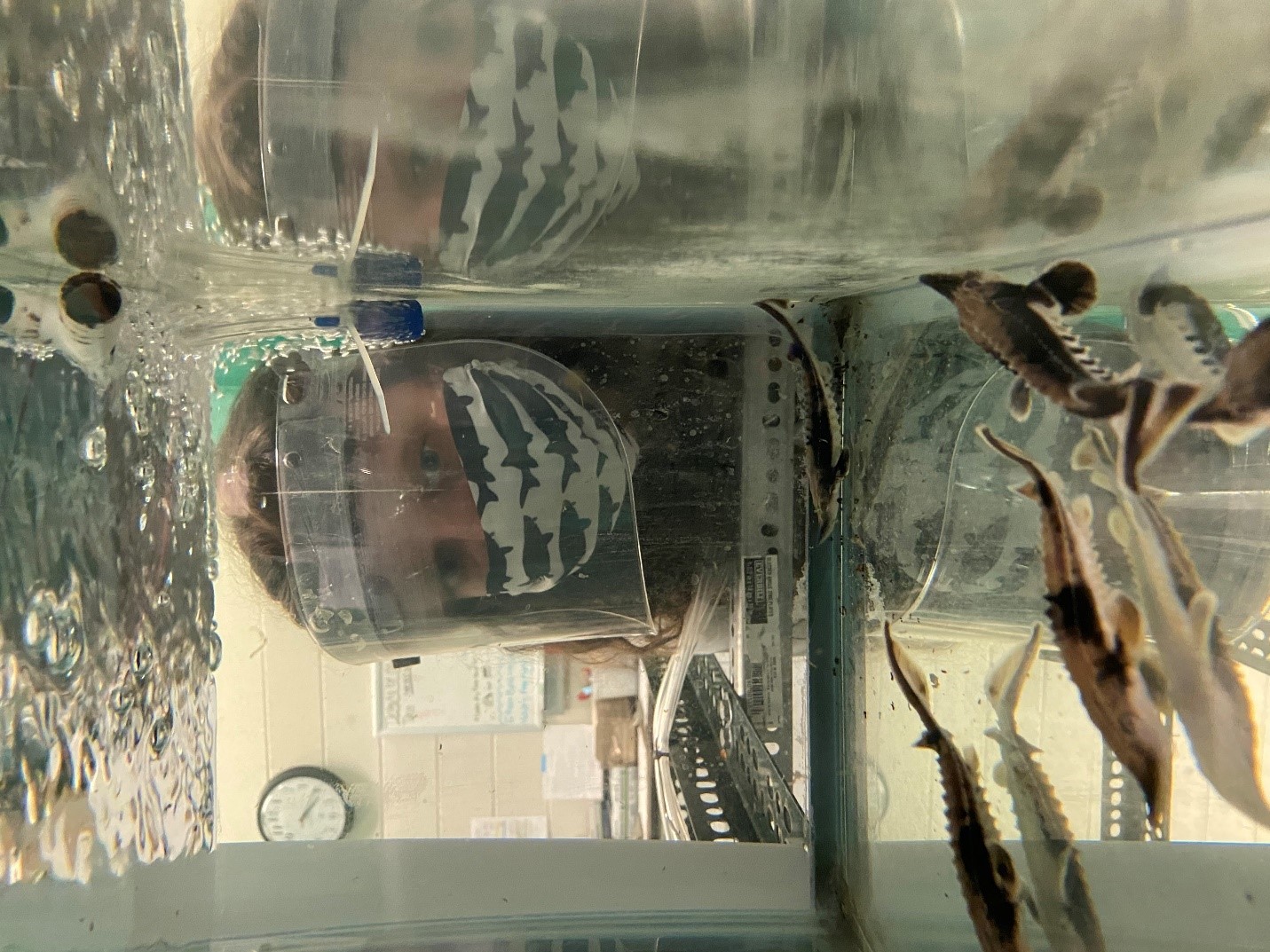Improving the health of Michigan’s fishes
Thomas Loch, who leads the Aquatic Animal Disease Ecology Program of the MSU Aquatic Animal Health Laboratory, and his team perform an array of clinical and diagnostic analyses on fish in Michigan.

On a chilly morning in early December, Thomas Loch headed to his Michigan State University laboratory to inspect specimens collected from a recent fish kill in Michigan.
Fish kills are localized die-offs that occur when several fish perish in a given location due to a variety of factors, including diseases, parasites and/or problems with the environment, such as poor water quality or an algae bloom.
As an aquatic animal health expert, it’s Loch’s job to figure out the cause. Fortunately for natural resources management agencies around the state, he’s well-equipped to handle the task.

Loch, who leads the Aquatic Animal Disease Ecology Program of the MSU Aquatic Animal Health Laboratory (AAHL), and his team examine freshly collected fish samples in the lab. There, they perform an array of clinical and diagnostic analyses, such as blood work, tissue biopsies and tests to detect pathogenic microbes and parasites. The AAHL examines between 10,000 to 20,000 fish annually.
“Some of the testing is quite similar to what people experience when they go to their doctor’s office,” Loch said. “We do a full clinical exam. Sometimes the culprits of a fish kill are bacteria, viruses or parasites we know of, and sometimes we find something new.”
An assistant professor, Loch holds dual appointments in the MSU Department of Fisheries and Wildlife and the Department of Pathobiology and Diagnostic Investigation. These units reside in the College of Agriculture and Natural Resources and the College of Veterinary Medicine, respectively, providing access to an impressive cohort of colleagues and leading diagnostic tools.
The majority of his position is funded by the Fisheries Division of the Michigan Department of Natural Resources (MDNR). He is also a member of the Partnership for Ecosystem Research and Management program, which unites MSU and management agencies, including the MDNR, to ensure the sustainability of Michigan’s natural resources.
Developing a passion for fisheries and aquaculture
Along with monitoring the health of wild fish throughout the Great Lakes basin, Loch is actively engaged with MDNR hatcheries used for fish stocking and conservation, and the aquaculture industry.
“My research has field, laboratory and fishery management components, so it’s extremely beneficial to have partners from across MSU and many agencies,” he said. “Needless to say, collaboration is critical to me and my students’ success and the success of our fish health efforts.”

Before leading the AAHL, Loch joined the team in 2004 and worked closely with Mohamed Faisal, a professor emeritus and former director of the lab, to grow the program’s prestige. Loch mentored graduate and undergraduate students, provided guidance to fisheries management agencies and built research networks. And his passion for fish infectious disease research blossomed.
The epidemiological triad of infectious disease — the relationship among the host, the pathogen and the environment — frames Loch’s research at the AAHL. Through his early work with the program, he was captivated by trying to understand how these elements interact to cause illnesses to flourish.
In particular, he became fascinated with flavobacteria, a diverse group of bacterial pathogens that cause some of the most damaging infectious diseases to fish populations in the wild and in captivity, including bacterial coldwater disease and columnaris. Both of these ailments can be especially harmful to trout and salmon, two of the most common groups of fish reared in Michigan hatcheries and aquaculture facilities. Loch said one of the major challenges is that some of the pathogens causing these diseases are often passed from mother to egg.
Combating fish disease with vaccines
The MDNR operates six hatcheries in Michigan for fish stocking purposes, and flavobacteria are the principal cause of illnesses there. It’s Loch’s responsibility to protect fish health at these locations. This includes devising optimal ways to disinfect eggs before they’re brought to the hatcheries, as well as preventative care, treatment of existing infections and certification that fish are disease-free before releasing into the wild.
“The creation of vaccines as a preventative measure is a research priority for my lab, and obviously vaccines are a topic of conversation around the world right now in the midst of the coronavirus pandemic,” Loch said. “As we’ve seen with this large-scale human health crisis, it can be difficult to develop a vaccine quickly. It takes time and testing, which can be frustrating but necessary to ensure safety.”
With funding from the U.S. Department of Agriculture and the Great Lakes Fishery Commission, Loch has embarked on several collaborative projects to create and evaluate vaccines against bacterial coldwater disease, columnaris and a virus that causes substantial mortality in lake trout called Salmonid Herpesvirus 3.
As a model for the effectiveness of these treatments, Loch cited a current vaccine used for prevention of furunculosis, a bacterial fish disease that can cause massive lesions, inflammation of internal organs and rapid death.
“With juvenile fish, we immerse them in the vaccine because handling each individual for an injection is stressful for young fish, and it protects them extremely well,” he said. “Adult fish are given an injection of the vaccine, and we get great protective results from that as well. As a result, furunculosis has been controlled quite well, so we’re hoping to do the same with some of these other diseases.”
Although much of his time is spent preventing and controlling problematic pathogens in hatcheries and wild fish, Loch also has a keen interest in boosting the health and productivity of U.S. aquaculture operations.
According to the National Oceanic and Atmospheric Administration, about 90% of the seafood consumed in the U.S. is brought from abroad, so Loch suggests there is substantial room for growth. He stresses that farmed fish are an important food source for an expanding world population.
“A lot of the practices we use in hatcheries for fishery conservation are applicable to aquaculture operations,” Loch said. “Aquaculture can provide a boon to our food security, so it’s worth investing in growing the industry nationally and in a manner that not only optimizes fish health on the farm, but also protects the health of nearby natural aquatic animal populations. To do so requires fish health expertise, and I’m very interested in being a part of educating the next generation of professionals interested in fish and food.”



 Print
Print Email
Email





